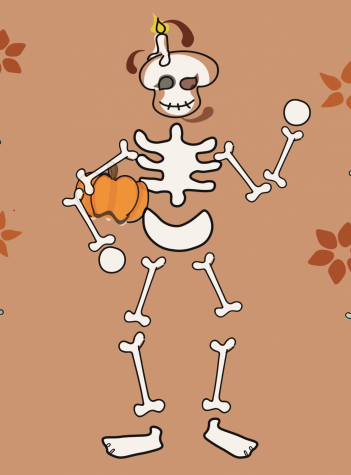Spooky Celebrations Around the World
Halloween is celebrated by almost all Americans, yet in the frenzy of candy and costumes, the true meaning behind it is often forgotten.
It originated from an older holiday called Samhain, but has developed to have more

Christian and Western influence. The initial focus of the celebration was on spirits and the end of the harvest season.
Since then, the holiday has evolved to be more lighthearted. Younger kids dress up in costumes and go from house to house saying, “Trick or treat.”
The meaning behind this phrase is that if the trick-or-treater doesn’t receive their candy, they will trick or cause mischief to the house and family. Older kids celebrate Halloween by visiting haunted houses, going to costume parties and doing fall-themed activities.
Día de los Muertos/Day of the Dead
“Día de los Muertos” or Day of the Dead is a holiday celebrated by most Mexicans.
It originated from rituals dating thousands of years ago in Mesoamerica. It was first practiced by the Aztec people in Mexico. Eventually, the holiday spread to Spain during the medieval ages. Spanish conquistadors brought the holiday to the New World, bringing darker views of dead after the Black Plague.
The purpose of the holiday is to honor deceased family members. An important part of the holiday is the “Ofrenda,” an altar with memorabilia and food offerings for the deceased family. “Calaveras” are pieces of art or writing that commemorate the dead. Specific traditions also vary from town to town.
The Disney-Pixar movie “Coco” (PG) is heavily inspired by this holiday.
Samhain
The Samhain (sow-in)
holiday is celebrated by Scottish and Irish people, as well as modern Pagans. Bonfires and candles are lit, since fire represents the welcoming of winter and is an important element to Pagans.
Dinners that day are silent to honor the dead. Some people remove all electronics from the dining room and reserve one seat at their dining table for the spirits. Pomegranates, which symbolize life, and apples, which symbolize death, are offered to the dead.
Black and orange colors are a theme in Samhain celebrations since they also symbolize life and death.

Stephanie Kontopanos is a senior and the assistant editor of The Tiger Print. This is her third year on staff and her second year being the Newspaper Grandma...



